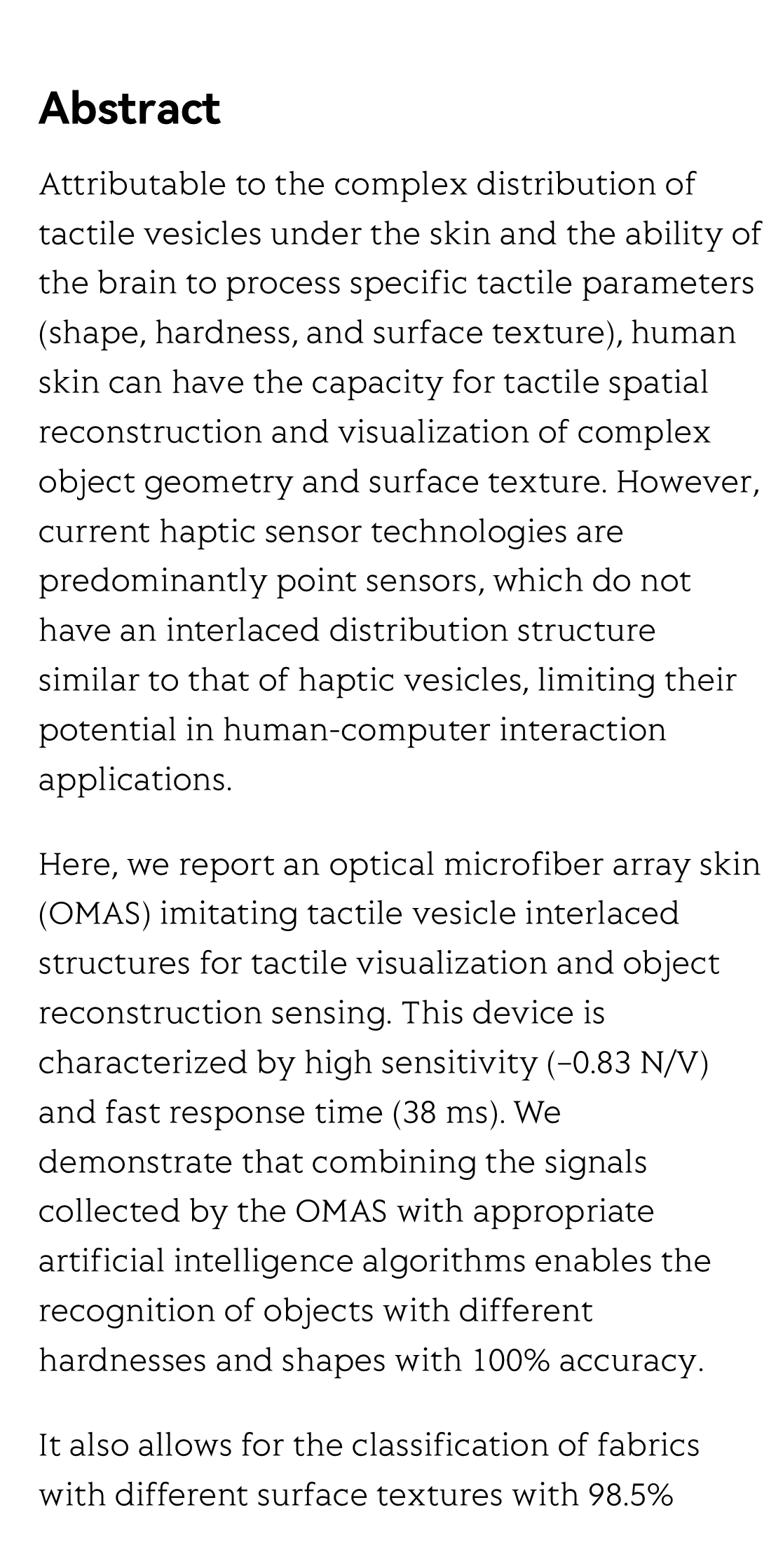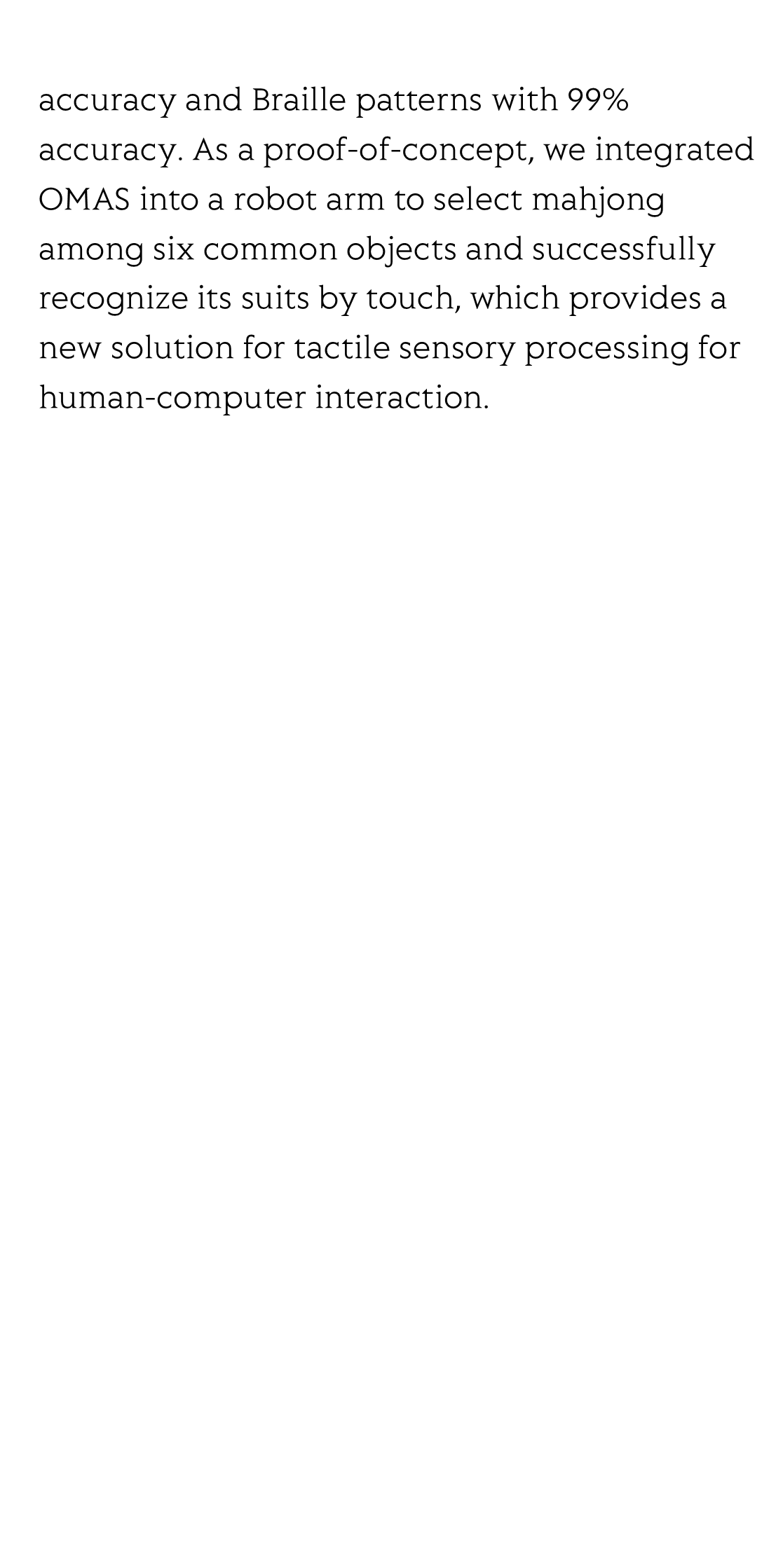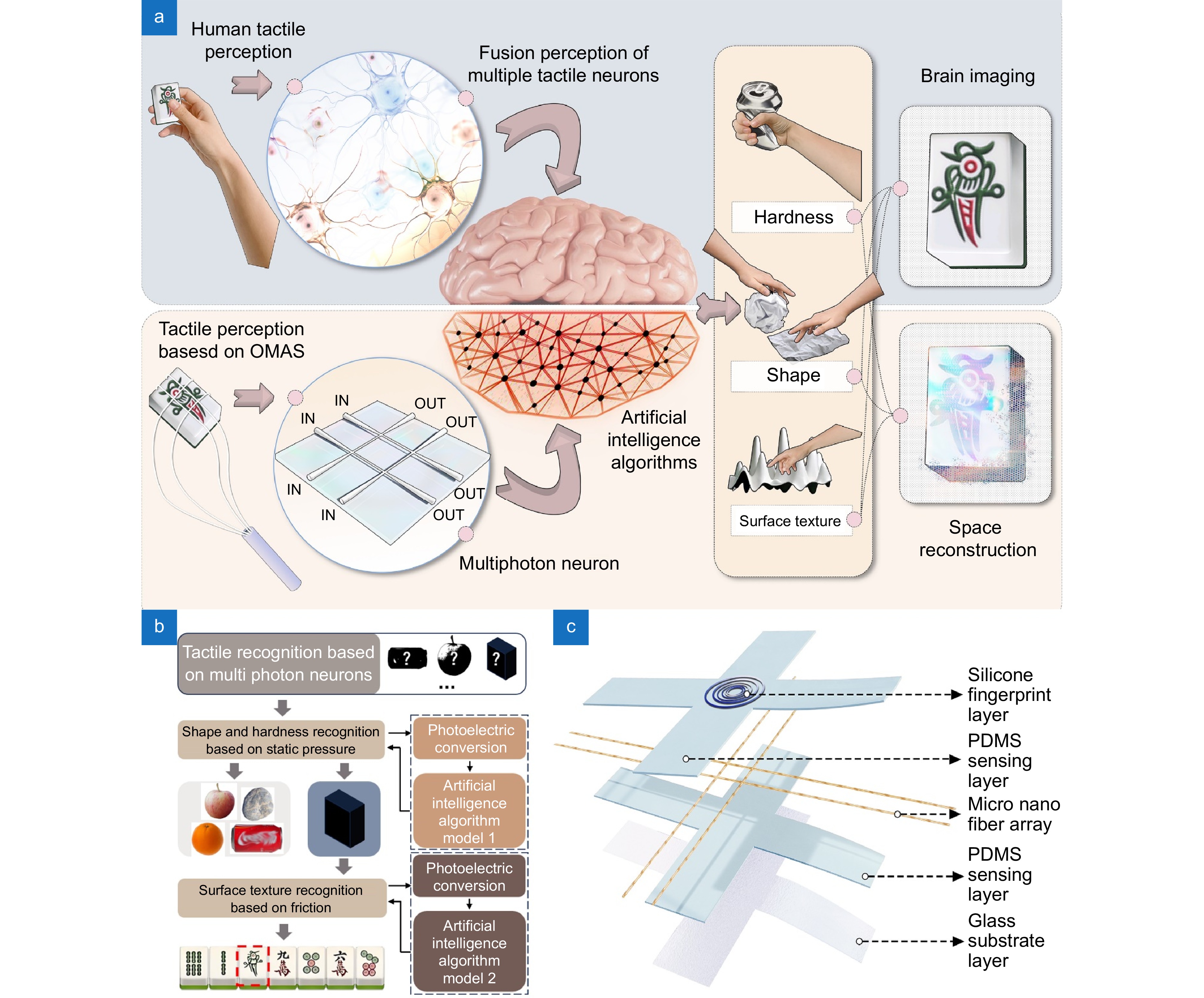(Peer-Reviewed) Multi-photon neuron embedded bionic skin for high-precision complex texture and object reconstruction perception research
Hongyu Zhou 周泓宇 ¹ ², Chao Zhang ¹ ², Hengchang Nong ¹ ², Junjie Weng ³, Dongying Wang ⁴, Yang Yu 于洋 ¹, Jianfa Zhang ⁵, Chaofan Zhang ⁶, Jinran Yu ⁶, Zhaojian Zhang 张兆健 ¹, Huan Chen 陈欢 ¹, Zhenrong Zhang 张振荣 ², Junbo Yang 杨俊波 ¹
¹ College of Science, National University of Defense Technology, Changsha 410073, China
中国 长沙 中国人民解放军国防科技大学理学院
² Key Laboratory of Multimedia Communication and Network Technology in Guangxi, School of Computer, Electronics and Information, Guangxi University, Nanning 530004, China
中国 南宁 广西大学计算机与电子信息学院 广西多媒体通信与网络技术重点实验室
³ College of Intelligence Science and Technology, National University of Defense Technology, Changsha 410073, China
中国 长沙 中国人民解放军国防科技大学智能科学学院
⁴ College of Meteorology and Oceanography, National University of Defense Technology, Changsha 410073, China
中国 长沙 中国人民解放军国防科技大学气象海洋学院
⁵ Hunan Provincial Key Laboratory of Novel Nano-Optoelectronic, Information Materials and Devices, National University of Defense Technology, Changsha 410073, China
中国 长沙 中国人民解放军国防科技大学新型纳米光电信息材料与器件湖南省重点实验室
⁶ College of Advanced Interdisciplinary Studies, National University of Defense Technology, Changsha 410073, China
中国 长沙 中国人民解放军国防科技大学前沿交叉学科学院
Opto-Electronic Advances, 2025-01-22
Abstract
Attributable to the complex distribution of tactile vesicles under the skin and the ability of the brain to process specific tactile parameters (shape, hardness, and surface texture), human skin can have the capacity for tactile spatial reconstruction and visualization of complex object geometry and surface texture. However, current haptic sensor technologies are predominantly point sensors, which do not have an interlaced distribution structure similar to that of haptic vesicles, limiting their potential in human-computer interaction applications.
Here, we report an optical microfiber array skin (OMAS) imitating tactile vesicle interlaced structures for tactile visualization and object reconstruction sensing. This device is characterized by high sensitivity (−0.83 N/V) and fast response time (38 ms). We demonstrate that combining the signals collected by the OMAS with appropriate artificial intelligence algorithms enables the recognition of objects with different hardnesses and shapes with 100% accuracy.
It also allows for the classification of fabrics with different surface textures with 98.5% accuracy and Braille patterns with 99% accuracy. As a proof-of-concept, we integrated OMAS into a robot arm to select mahjong among six common objects and successfully recognize its suits by touch, which provides a new solution for tactile sensory processing for human-computer interaction.
High-resolution tumor marker detection based on microwave photonics demodulated dual wavelength fiber laser sensor
Jie Hu, Weihao Lin, Liyang Shao, Chenlong Xue, Fang Zhao, Dongrui Xiao, Yang Ran, Yue Meng, Panpan He, Zhiguang Yu, Jinna Chen, Perry Ping Shum
Opto-Electronic Advances
2024-12-16
Ultra-high-Q photonic crystal nanobeam cavity for etchless lithium niobate on insulator (LNOI) platform
Zhi Jiang, Cizhe Fang, Xu Ran, Yu Gao, Ruiqing Wang, Jianguo Wang, Danyang Yao, Xuetao Gan, Yan Liu, Yue Hao, Genquan Han
Opto-Electronic Advances
2024-10-31







